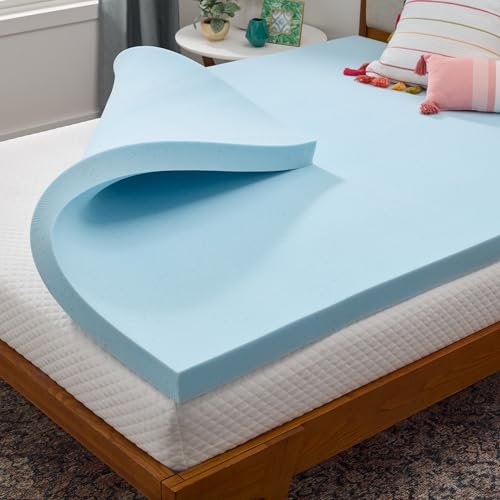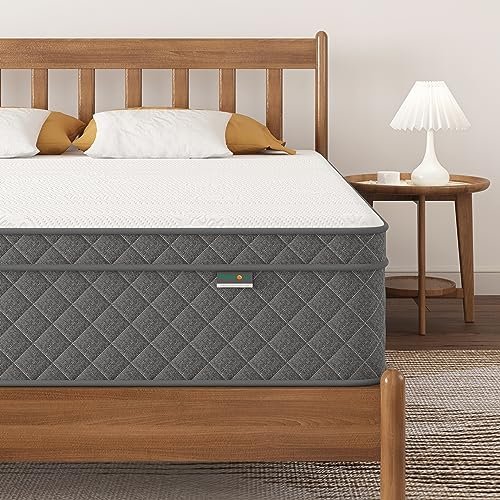
Don’t Lose Sleep! Your Ultimate Guide on How to Repair a Broken Bed Frame (DIY Steps)
That dreaded sag, the unsettling creak, or worse – the sudden jolt in the middle of the night that tells you your trusty bed frame has given up the ghost. A broken bed frame isn’t just an inconvenience; it can disrupt your sleep, cause discomfort, and even lead to bigger problems if not addressed promptly.
But before you resign yourself to the expense of a brand new frame or a night on the couch, take a deep breath! Many common bed frame issues are surprisingly fixable with a little DIY know-how and the right approach. Repairing your bed frame can save you money, extend the life of your furniture, and get you back to a comfortable night’s sleep.
This detailed guide will walk you through identifying the problem, step-by-step repair instructions for various types of damage, essential tips, and common mistakes to avoid. Let’s get your bed back in shape!
Why Repair Your Bed Frame?
Beyond the obvious cost savings, repairing your bed frame offers several benefits:
- Sustainability: You’re reducing waste by not sending a perfectly salvageable item to the landfill.
- Convenience: No need to shop for, transport, and assemble a new frame.
- Sentimental Value: Preserve a beloved piece of furniture that fits your room perfectly.
- Immediate Solution: Get your bed functional again much faster than waiting for a new delivery.
Safety First! Your Pre-Repair Checklist
Before you grab any tools, safety is paramount. Always begin with these crucial steps:
- Remove the Mattress and Box Spring: This is essential for access and safety. Set them aside carefully.
- Unplug Any Electrical Components: If your bed has integrated lighting, charging ports, or adjustable features, unplug it from the wall outlet.
- Clear the Area: Ensure you have ample space to work around the bed frame. Remove any nightstands, rugs, or obstacles.
- Gather Your Tools: While specific tools will depend on the damage, here’s a general list of what you might need:
- Screwdriver set (Phillips, flathead)
- Wrench set (for bolts)
- Drill and drill bits (for pilot holes)
- Wood glue
- Wood filler
- Clamps (bar clamps, C-clamps)
- Mending plates, corner braces, or reinforcing brackets
- Small wooden dowels or toothpicks
- Sandpaper (various grits)
- Measuring tape
- Pencil
- Saw (hand saw or jigsaw, for cutting new wood)
- Hammer or mallet
- Pliers
- Work gloves and safety glasses (always recommended!)
Identify the Culprit: What’s Actually Broken?
A successful repair starts with accurately diagnosing the problem. Carefully inspect your entire bed frame. Is it:
- A cracked or broken wooden rail or slat?
- Loose or stripped screws/bolts at a joint?
- A sagging center support beam or broken leg?
- A bent or broken metal component (less common for DIY fix)?
Once you’ve identified the type of damage, you can choose the appropriate repair method.
Common Bed Frame Breakdowns and Their DIY Fixes
Here are step-by-step instructions for the most frequent bed frame issues:
1. Cracked or Broken Wooden Frame Pieces (Side Rails, Headboard, Footboard)
Wooden frames are popular, but their structural components can crack or split under stress.
A. For Small Cracks or Splits (Non-Structural):
- Step 1: Clean the Area: Remove any dust or debris from within and around the crack.
- Step 2: Apply Wood Glue: Generously apply wood glue deep into the crack. You can use a small knife or toothpick to ensure it penetrates.
- Step 3: Clamp It Tight: Bring the two sides of the crack together and clamp them firmly using bar clamps or C-clamps. Ensure the wood is aligned correctly. If you don’t have clamps, heavy weights or strong tape can work in a pinch, but clamps offer superior pressure.
- Step 4: Wipe Away Excess: Immediately wipe off any excess glue with a damp cloth.
- Step 5: Let it Cure: Allow the glue to dry completely for at least 24 hours (or as per the glue manufacturer’s instructions) before removing the clamps or putting weight on the frame.
B. For Larger Breaks, Splits, or Completely Snapped Wood (Structural Pieces):
This requires more reinforcement.
- Step 1: Realign and Glue: Align the broken pieces as perfectly as possible. Apply a strong wood glue to both broken surfaces.
- Step 2: Clamp Firmly: Use clamps to hold the pieces tightly together while the glue dries, ensuring proper alignment. Wipe off excess glue.
- Step 3: Reinforce with Mending Plates or a Splint: Once the glue is fully cured, you’ll need to add external reinforcement.
- For inside corners or flat surfaces: Attach metal mending plates or corner braces over the glued joint. Pre-drill pilot holes for screws to prevent further splitting. Use appropriate-length wood screws.
- For a snapped rail/beam: Cut a piece of sturdy wood (a “splint” or “doubler”) of similar thickness that is at least 12-18 inches longer than the break. Apply wood glue to the splint and one side of the repaired rail, then screw the splint firmly into place across the break, on the inside of the frame if possible, or underneath. Repeat on the other side of the break if needed. Ensure the screws are long enough to penetrate both pieces but not so long they come out the other side.
- Step 4: Sand and Finish (Optional): Once reinforced, you can sand the area smooth and touch up with paint or stain if desired.
2. Broken or Loose Bed Slats
Slats are crucial for mattress support.
- Step 1: Remove the Mattress and Box Spring.
- Step 2: Assess the Damage:
- Single Broken Slat: Measure the length, width, and thickness of the broken slat. Purchase or cut a new piece of sturdy wood (e.g., pine, poplar) to the exact dimensions. Sand the edges smooth.
- Multiple Broken Slats: Replace individually as above, or consider a more robust solution like a sheet of plywood cut to fit the entire bed frame opening (ensure it has breathing holes if your mattress requires it).
- Step 3: Install New Slat(s): Place the new slat(s) into position.
- For loose slats: If they keep falling out, screw them directly into the side rails through pre-drilled pilot holes. Use two screws at each end for stability.
- For slats that just rest on ledges: Make sure they fit snugly. You can add small L-brackets to the side rails for extra support, screwing the slat into the bracket.
- Step 4: Test: Gently press on the new slats to ensure they are secure and stable.
3. Loose or Stripped Screws/Bolts at Joints
This is a very common cause of creaking and wobbling.
- Step 1: Locate the Culprit: Identify all loose screws or bolts, especially at the corners and where side rails connect.
- Step 2: Tighten Everything: Using the appropriate screwdriver or wrench, tighten all visible screws and bolts. Do not over-tighten, especially with wood, as this can strip the material.
- Step 3: For Stripped Screw Holes in Wood:
- Remove the screw.
- Fill the stripped hole with wood filler, wood glue mixed with sawdust, or by inserting a few wooden toothpicks/dowels (snapped off flush) coated in wood glue.
- Let the filler/glue dry completely.
- Pre-drill a new, slightly smaller pilot hole directly into the filled area.
- Reinsert the screw and tighten.
- Step 4: For Stripped Bolt Holes in Metal: This is trickier. If the threads are stripped, you might need a larger diameter bolt and nut or a thread repair kit (if you’re experienced). Often, the best DIY solution here is to use a through-bolt with a washer and nut on the other side if the design allows, providing a new, stronger connection.
4. Sagging or Broken Center Support Legs/Beams
Crucial for larger beds (queen, king) to prevent mattress sag.
- Step 1: Assess the Damage:
- Loose Support Leg: Simply tighten the leg if it’s threaded, or re-secure its attachment point with screws or bolts.
- Broken Wooden Leg: Measure the height and diameter. Purchase a new wooden furniture leg of the same height (available at most hardware stores or online). Attach it using the existing mounting hardware or new brackets.
- Sagging Center Beam: This often happens due to insufficient support.
- Add additional support legs: If there’s only one leg in the middle, consider adding two or three more evenly spaced along the beam.
- Reinforce a wooden center beam: If the beam itself is bowing, you can screw a sturdy metal bracket or an additional wooden beam (like a 2×4) along its underside for extra rigidity. Ensure the new supports are the exact same height as the existing ones to distribute weight evenly.
5. Bent or Broken Metal Frame Components (Welds, Rails)
Metal frames are durable but can bend or welds can break.
- A. Bent Metal Rail:
- Carefully attempt to bend it back into shape using heavy-duty clamps, a rubber mallet, and a block of wood to protect the metal. Proceed with caution as metal can snap if bent too far or too many times.
- B. Broken Welds:
- DIY repair for a broken weld is generally not recommended for structural components as it requires specialized welding equipment and expertise to ensure safety and strength.
- Temporary fix: For a non-critical area, you can use heavy-duty metal mending plates or brackets with bolts to span the broken weld, effectively creating a new joint. Pre-drill holes if necessary.
- Professional Help: For significant structural breaks in metal frames, it’s often best to consult a professional welder or consider replacing the frame. Your safety and the longevity of the repair depend on proper execution.
General Tips for a Successful Repair
- Patience is Key: Don’t rush. Take your time, especially when aligning pieces or allowing glue to dry.
- Measure Twice, Cut Once: This old adage is always true, especially when cutting new slats or reinforcement pieces.
- Pre-Drill Pilot Holes: When screwing into wood, always pre-drill a pilot hole that is slightly smaller than the screw’s diameter. This prevents splitting, especially in hardwoods or near edges.
- Allow Glue to Cure Fully: Resist the urge to use the bed before the glue has had ample time to set. This is crucial for a strong bond.
- Test Everything: Before putting your mattress back on, gently test the repaired areas. Apply some pressure, listen for creaks, and ensure everything feels stable.
Common Mistakes to Avoid
- Ignoring the Root Cause: Don’t just patch the symptom. If a loose screw caused a crack, fix the screw and the crack. If the bed is habitually overloaded, address that.
- Not Using Clamps with Wood Glue: Clamps provide essential pressure for wood glue to form a strong, lasting bond. Without them, the repair will be weak.
- Rushing the Drying Time: Impatience will lead to a failed repair. Give glue and filler the time they need to fully cure.
- Over-Tightening Screws/Bolts: This can strip threads, crack wood, or deform metal. Tighten until snug, then give it a small extra turn.
- Using the Wrong Tools: Trying to force a screw with the wrong size screwdriver can strip the head or damage the material.
- Ignoring Safety: Always wear safety glasses when drilling or hammering. Be mindful of sharp edges or splinters.
- Overloading the Bed: A common cause of bed frame damage. Be aware of the weight limits for your frame, and avoid excessive jumping or heavy loads.
Preventative Maintenance for a Long-Lasting Bed
Once your bed frame is repaired, keep it in top shape with these tips:
- Regularly Check and Tighten: Every few months, quickly check all screws and bolts and tighten any that have loosened.
- Inspect for Wear: Periodically examine slats, rails, and support legs for any signs of cracking or weakness.
- Distribute Weight Evenly: Avoid putting all your weight in one spot consistently.
- Don’t Jump on the Bed: This applies to adults and kids alike! It puts immense, sudden stress on the frame.
- Consider Upgrades: If you frequently deal with broken slats, consider investing in a plywood platform or more robust, closely spaced slats.
Repairing a broken bed frame is a rewarding DIY project that can save you time, money, and ensure you get the restful sleep you deserve. By following these steps and paying attention to detail, you’ll have your bed feeling brand new in no time. Sweet dreams!
Frequently Asked Questions(FAQ)
Q. What are the common signs of a broken bed frame?
A. Common signs include creaking noises when you move, sagging in the mattress, visible cracks or splits in wooden components, bent metal parts, loose joints, wobbly legs, or the bed feeling unstable when you lie down.
Q. What tools do I typically need for a bed frame repair?
A. Basic tools often include a drill, screws (wood screws, self-tapping metal screws), wood glue, clamps, C-clamps, a rubber mallet, screwdrivers, wrenches, a measuring tape, and safety glasses. Depending on the material, you might also need wood filler, metal brackets, or repair plates.
Q. How do I fix a broken wooden slat?
A. For a snapped slat, you can often replace it with a new piece of wood of the same dimensions and thickness. If it’s merely cracked, apply strong wood glue along the crack, clamp it securely until dry, and then reinforce it with small metal mending plates or extra screws on either side for added stability.
Q. How do I repair a cracked or split wooden frame rail?
A. If the crack isn’t too severe, apply strong wood glue deep into the crack, then clamp the area tightly for at least 24 hours. For added strength, you can drill pilot holes and screw in wood screws perpendicular to the crack, or attach metal mending plates or a wooden splint over the damaged section using screws.
Q. What if the metal frame support is bent or broken?
A. For a bent metal support, you might be able to gently hammer it back into place using a rubber mallet and a block of wood to distribute the force. If it’s severely bent or broken, it’s often best to replace the specific component (e.g., center support legs) if possible. Alternatively, you can reinforce the area with heavy-duty metal repair plates or angle brackets, bolting them securely to the existing frame.
Q. How can I reinforce a wobbly bed frame?
A. Wobbly frames often indicate loose joints. Tighten all screws and bolts on the frame, checking all connection points. If the joints are worn, you can disassemble them, apply wood glue to the dowels or tenons, and reassemble. Adding corner braces or metal L-brackets to the inner corners of the frame can significantly improve stability. Ensure all center support legs are securely attached and evenly support the frame.
Q. Can I fix a broken bed leg?
A. Yes, depending on the severity. If it’s a simple split, wood glue and clamps can work, followed by reinforcement. If it’s completely snapped off, you might need to use a strong wood dowel or metal plate to reattach it, or fabricate a new leg from a sturdy piece of wood and attach it with strong screws and brackets. Sometimes, universal replacement legs are available that can be screwed into a mounting plate.
Q. When should I consider replacing the bed frame instead of repairing it?
A. Consider replacement if the damage is extensive, affecting multiple structural components, or if the frame is made of particle board that has disintegrated and cannot hold fasteners. If repairs are temporary, recurring, or the cost of materials and time for repair approaches the cost of a new, sturdy frame, replacement is usually the more practical and safer option.
Q. How can I prevent my bed frame from breaking again?
A. To prevent future breaks, avoid jumping on the bed, ensure the mattress is evenly supported (use a bunkie board or more slats if needed), tighten all frame connections periodically, and use appropriate center support legs, especially for larger beds. Ensure the bed is placed on a level surface to distribute weight evenly.
Q. Are there temporary fixes for a broken bed frame?
A. For a broken slat, you can temporarily place a sturdy piece of plywood or thick cardboard underneath the mattress in that area. For a wobbly leg, you might prop it up with books or a stable block of wood. These are very short-term solutions to provide immediate relief but should be followed by a proper repair as soon as possible, as they can be unstable or cause further damage.
Related Articles
7 Top Full Size Bed Frames: What is the Dimensions of a Full Size Bed Frame and More!
Getting a good night’s sleep often starts with the right bed, and for many, a full-size bed is the perfect sweet spot between a twin and a queen…
How Much Is a King Size Sleep Number Smart Bed
How Much Is a King Size Sleep Number Smart Bed? Your Guide to Understanding the Investment Recommended Product: Select Comfort Air Bed Chamber for Sle…
How Much Does a Sleep Number 360 Smart Bed Cost
How Much Does a Sleep Number 360 Smart Bed Cost? Recommended Product: Sven & Son Classic Adjustable Bed Base — head and foot lift, massage, under-…



